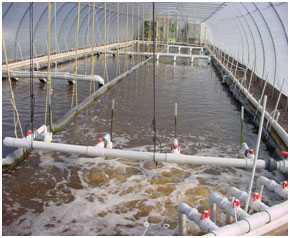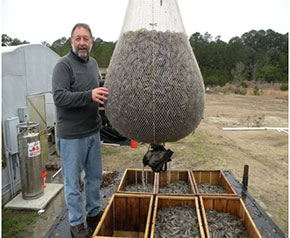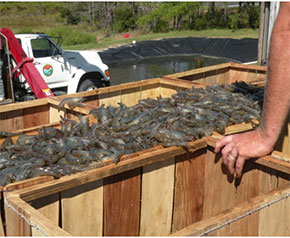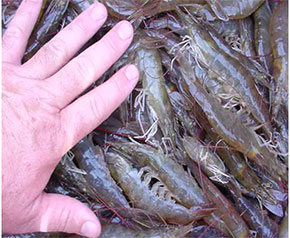Research - Shrimp
Shrimp production technology for outdoor ponds was producing up to 2,000 kg/ha in the early 1980's when WMC began operations. The Center has been the leader in intensification of pond production technology. By using the right combination of stocking density, feeding rate, aeration rate and water exchange, WMC has demonstrated production as high as 29,000 kg/ha. In the 1990’s, there were more than 180 acres of commercial shrimp ponds in SC. These facilities were able to routinely target production levels of 10,000 to 15,000 kg/ha by using production practices developed at the center. After several years, pathogen introduction caused several shrimp farms to close. No new farms opened due to continued bio-security concerns, high land costs, low shrimp prices, and a one crop per year growing season.
In 2000, the center began work to develop the next generation of marine shrimp production systems to be built in the US. The center built a commercial size prototype. This new shrimp production system is managed as a closed biofloc or bacteria based system where seawater is recirculated and heavily aerated with zero water exchange. The system is covered (greenhouse) and can produce three crops of shrimp a year with added heat during cooler months. This new biofloc based system is more productive than open ponds yielding more than 60,000 kg/ha per crop.
Marine shrimp production research in a closed bio-floc managed system. Pacific white shrimp (Litopenaeus vannamei)
 |
 |
 |
 |
